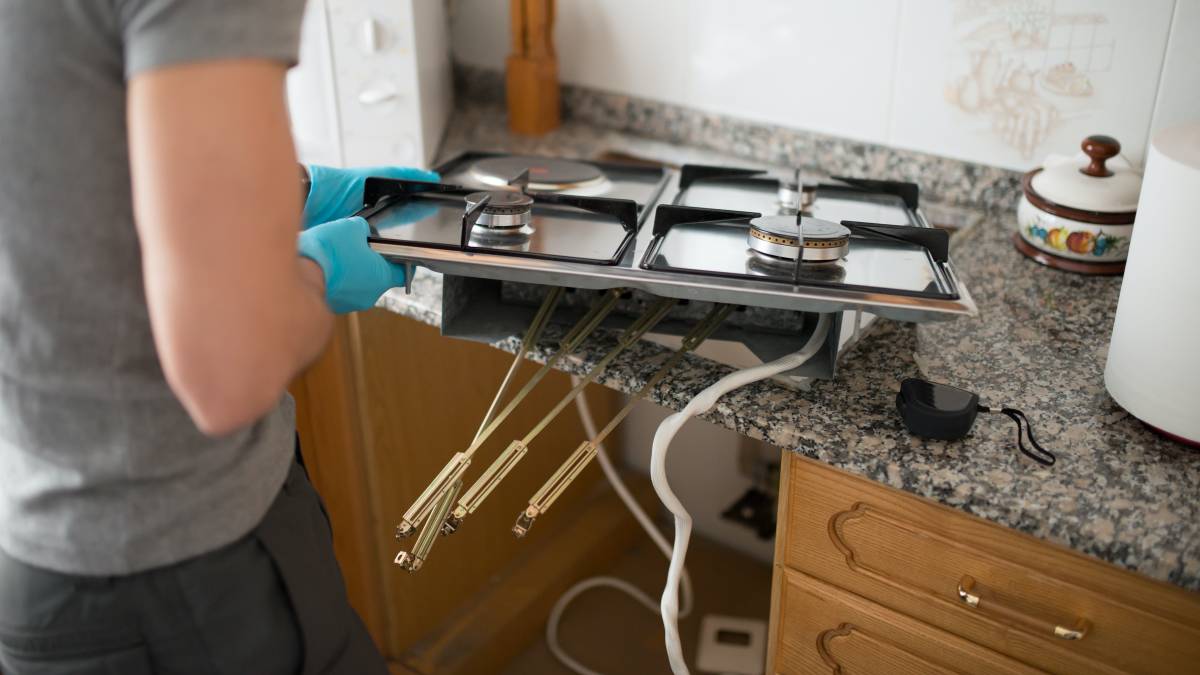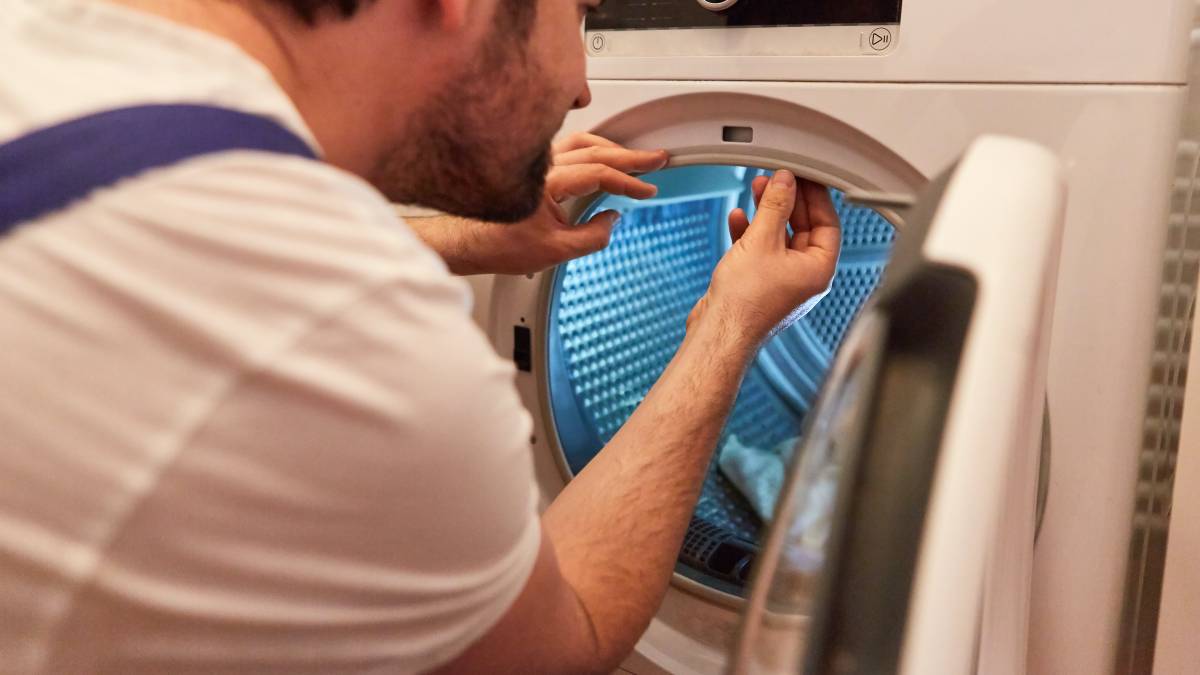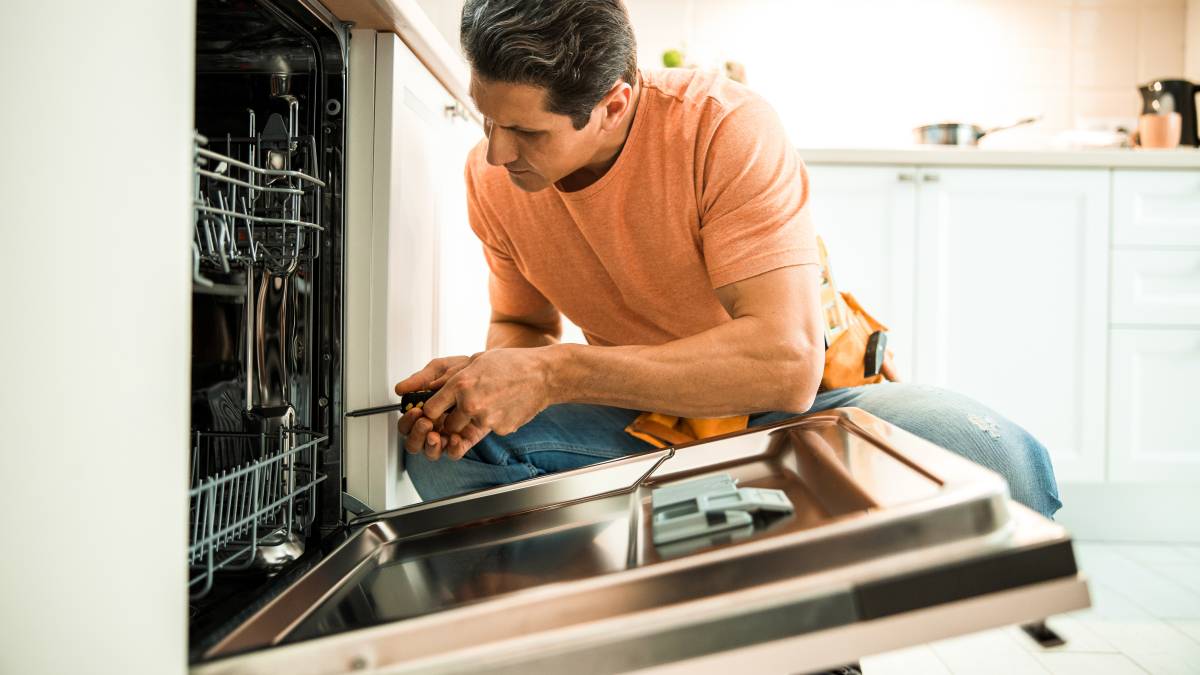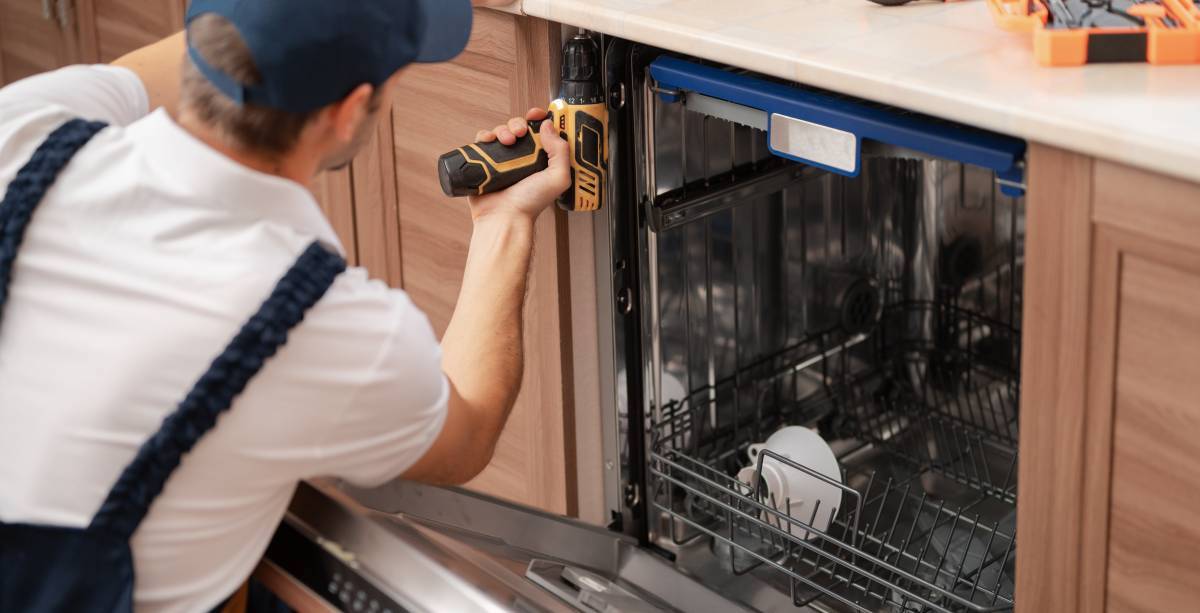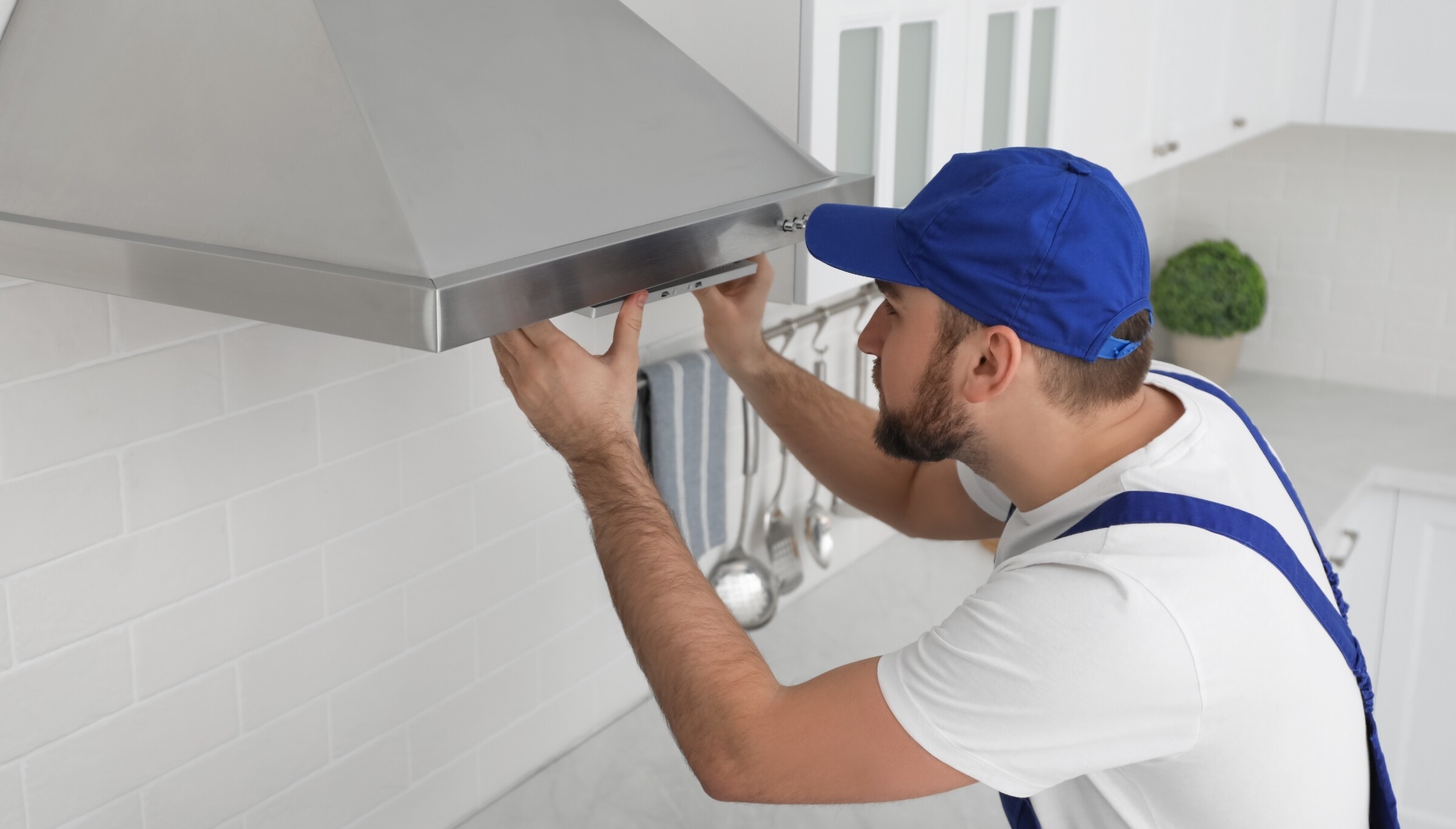- Home/
- Comparisons/
- Appliances/
- Gas vs Induction Hob
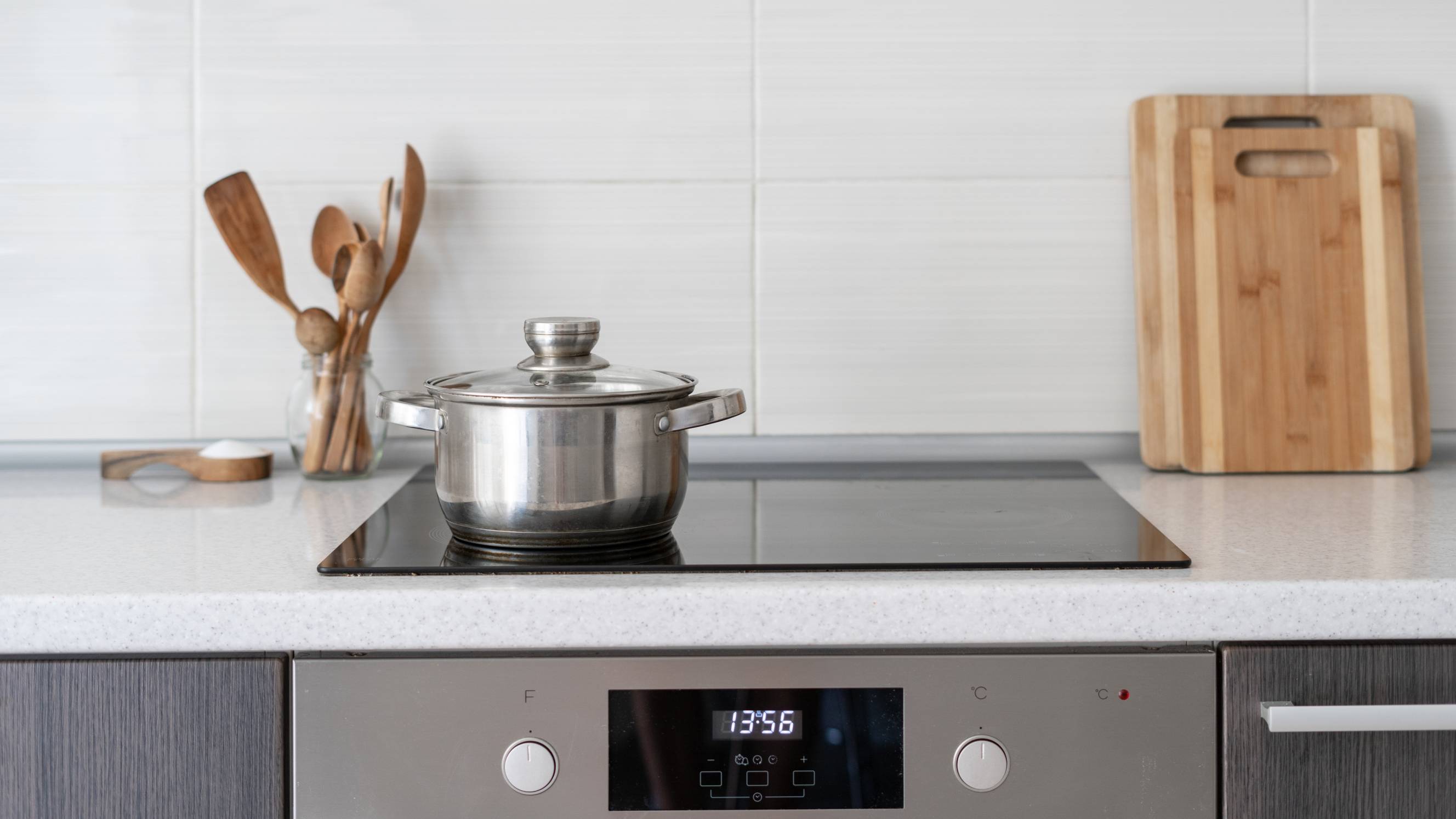
Gas vs Induction hob: Which is better for home cooking?
Let us help you decide between a gas or induction hob.
Find appliance installersLast Updated on
Key Facts
- A gas hob uses natural gas for cooking, typically featuring an electronic ignition switch that generates a spark and produces blue open flames upon turning the control knob.
- An induction hob utilises electromagnetism to cook food. It creates a fluctuating magnetic field to generate heat through induction-compatible cookware.
Hobs have become an essential feature in contemporary British kitchens. Their sleek and versatile design lends a touch of style and maximises storage space in the culinary hub. If you’re contemplating a kitchen upgrade and eyeing a new hob, you must choose between an induction and a gas hob.
This comprehensive guide covers the main differences between gas vs induction hobs. Delving into various aspects such as cost, design, installation, functionality, efficiency, and maintenance, you’ll get an idea about the type of hob that best suits your kitchen.
What is a gas hob and how does it work?
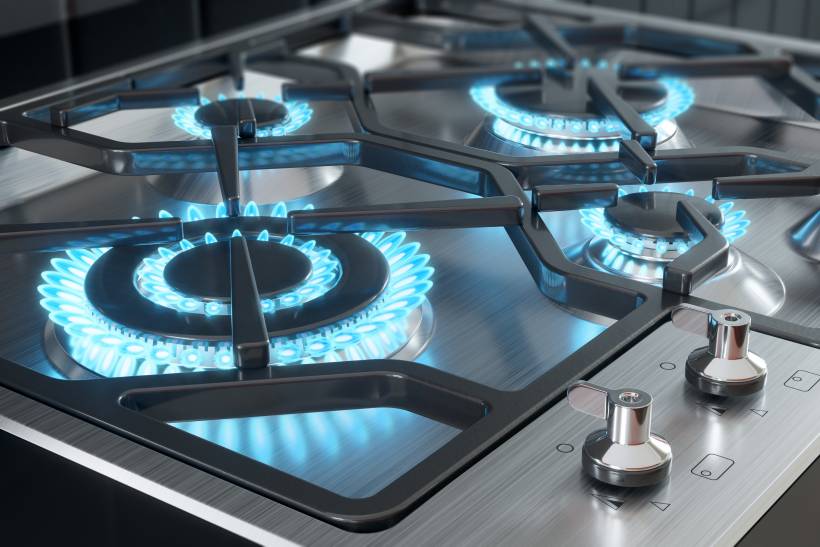
A gas hob uses natural gas to cook food. Most modern models with a standard gas hob size of 60 cm come with an electronic ignition switch that produces a spark to ignite flames when turning the control knob.
How it works is simple: the control knob triggers the gas valve to open, allowing pressurised gas from the fitted gas line to flow through and exit the burners. Once the natural gas mixes with air, open blue flames are produced.
What is an induction hob and how does it work?
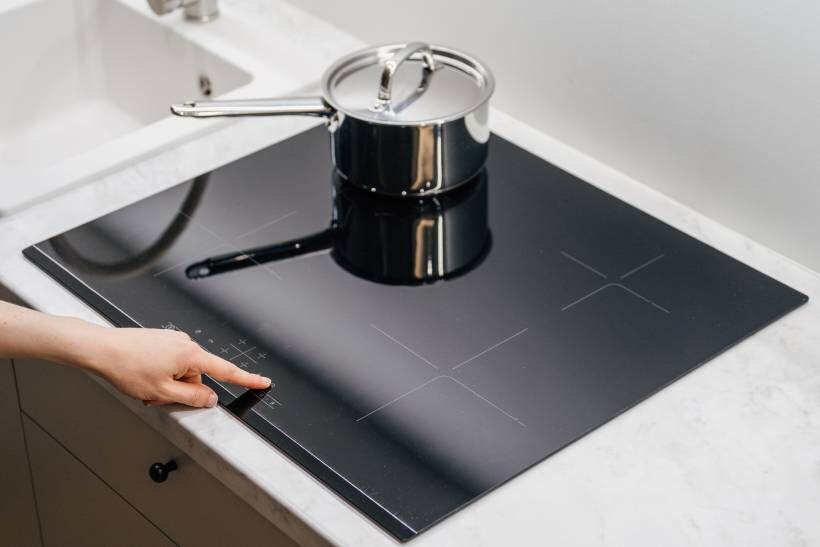
An induction hob is a more advanced kitchen appliance that uses electromagnetism to cook food. The electromagnetic process is fascinating because electric currents flow through a copper coil underneath, creating a fluctuating magnetic field. So, when ferromagnetic cookware comes in contact with the glass surface of an induction hob, the fluctuating magnetic and electric current flows through the cookware and starts generating heat.
Pans or pots must be made of ferromagnetic material to work on induction hobs. Stainless steel or cast iron with magnetic properties heat up directly and faster when their magnetic regions interact with the induction hob.
Want to know if your cookware will work with induction hobs? Simply place a magnet against the bottom of the pot or pan; if it sticks, it’ll work fine.
What is the difference between ceramic and induction hobs?
Induction hobs are sometimes mistaken for ceramic hobs as both run on electric power and have metal coils and glass surfaces. In addition, you can use the induction pans on a ceramic hob. However, there is a significant difference between these two electric hobs in terms of cooking speed, design, functionality, and safety.
For one, induction hobs come with copper coils that work as a magnetic field to generate heat, whereas ceramic hobs use metal coils as heating elements. Between the two, induction models cook faster because they directly transfer heat towards the conductive cookware instead of heating the surrounding glass-top surface.
Moreover, an induction hob's flexible design gives you more control over arranging your pots and pans on the glass stovetop. Meanwhile, a ceramic electric hob has fixed cooking zones, so you should always place your pans and pots in the exact cooking zone to ensure proper heating.
Lastly, when it comes to safety, induction hobs come on top. Their glass stovetop does not heat up, unlike ceramic electric hobs.
Induction or gas hob: Which is better for your needs?
You might be planning a kitchen renovation soon, so you are here contemplating whether an induction or gas hob is better. Choosing the right one is tricky as you must consider many factors.
In terms of cost
Gas hobs are more affordable, with some units as low as £80. Meanwhile, induction model prices start at £150. Although a gas hob is cheaper, installation and repairs also add to the total cost of owning one. They can be expensive, especially if your house needs a gas connection. Additional cooling costs might also occur when using a gas hob because it emits radiant heat.
Moreover, when it comes to the running costs of induction vs gas hobs in the UK, induction hobs are cheaper to run because of their energy efficiency. However, this type of hob will only work properly if you have induction-compatible cookware. You need to buy one if you decide to make the switch, which adds to the overall cost.
In terms of design
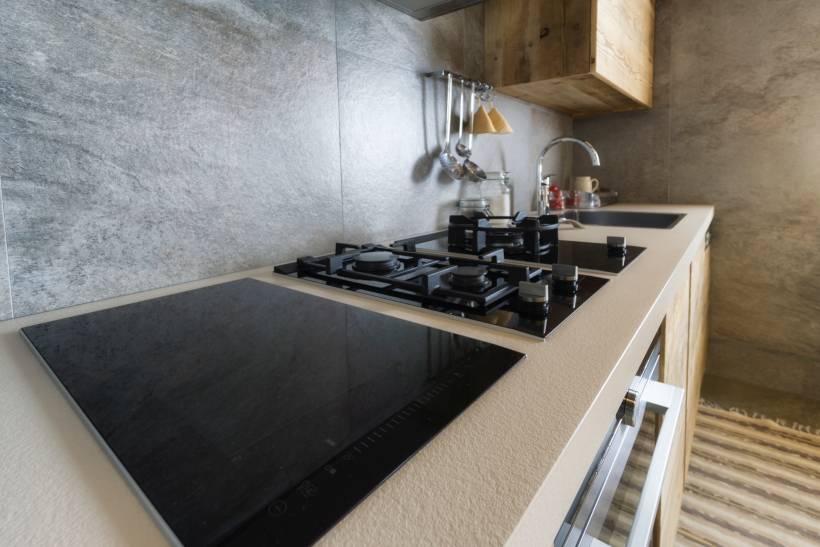
When it comes to design, it depends on what kitchen style you want to achieve. For example, induction hobs look great in kitchens with a modern or contemporary style because of their sleek glass hob. You can also integrate them into a kitchen island or peninsula for a seamless look. It allows you to hang out with your family and friends while you prepare and cook food.
Meanwhile, gas hobs with elevated burner grates look bulkier, adding a traditional, country-style look to the kitchen. This type of hob would look lovely in a Hampton-style kitchen because the elevated iron hob grates add an interesting accent to the iconic light Hamptons colour theme. Seek some professional advice from kitchen designers if you want a similar style for your kitchen.
If you are still trying to figure out the rest of your kitchen design aside from your cooktop, consider checking out this renovation checklist to understand how and what to prepare for a complete renovation.
In terms of installation
Installing a gas hob is easy if you already have a gas connection at home. But if that is not the case, you may still need to call for kitchen installation services, which can be expensive and time-consuming.
Installing induction hobs also requires some extra work. They use more energy than other hob types, so a licensed electrician must install a dedicated electrical circuit with a high power rating. Fortunately, plug-play induction models are now available, and you can use them on a standard 13-amp socket.
In terms of functionality
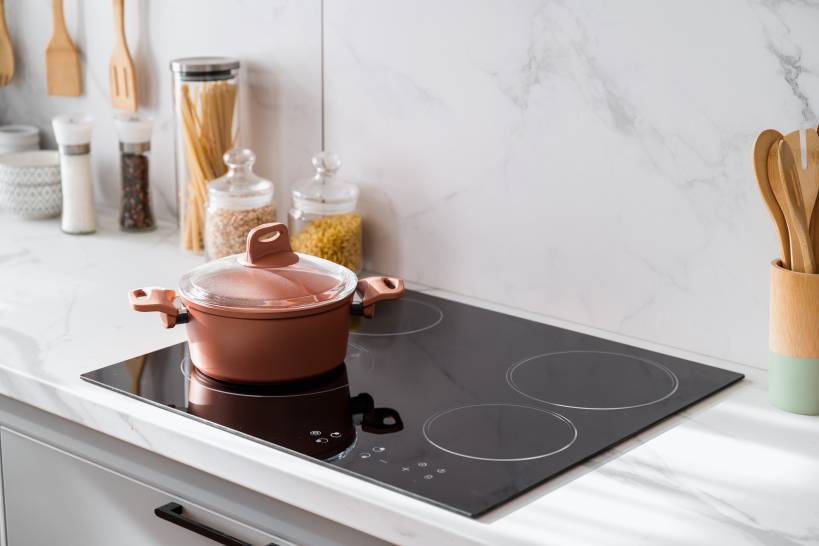
Switching to induction cooking might pose some challenges if you have a gas connection at home. Aside from the installation woes, you might find it jarring to cook without a visual indicator of flames coming out from the burners. But give it a few weeks, and you will find cooking with an induction hob convenient. Unlike gas hobs, it heats food faster, and the induction cooking surface does not heat up.
Furthermore, Induction hobs are a great addition to modern smart kitchens because they have built-in safety features. These include temperature monitoring, automatic switch-off, child locks, and pan detection. The only downside is that they need specific cookware to function properly. This is where gas hobs gain the upper hand, as you can use any type of pot and pan with a gas hob.
In terms of efficiency
Induction hobs are more efficient. When turned on, they instantly heat up after placing a ferromagnetic cookware on top of the glass surface. Meanwhile, gas hobs would take some time to heat and cook food because the open flames from the gas burners are slow to adjust to a desired temperature.
Hotspots are also a problem in gas cooking, causing food to have burnt edges or be undercooked after cooking. Fortunately, this won’t be an issue in induction cooking because the pot becomes the heating element, so heat is evenly spread while cooking. This ensures food is always cooked evenly.
Another interesting fact is that induction hobs boil water 20 to 40 per cent faster than gas and electric hobs. This further proves that induction hobs are more efficient.
In terms of maintenance and durability
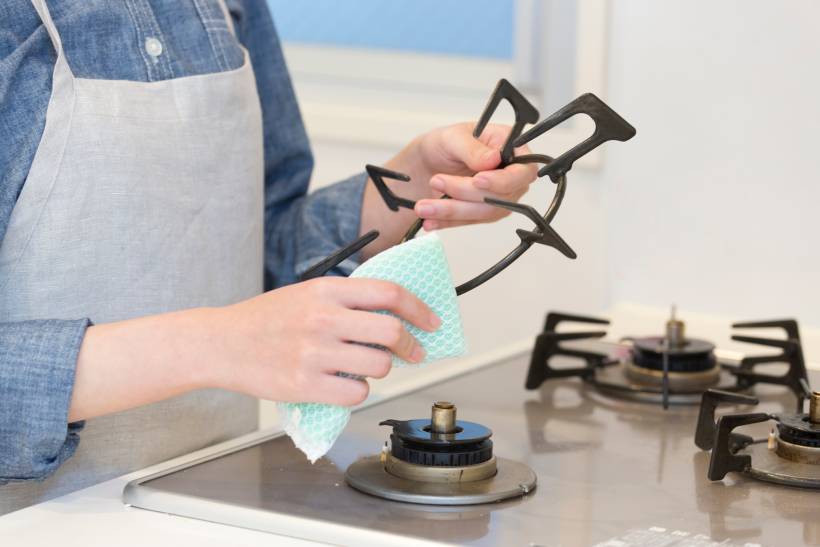
Maintaining a gas hob requires more work because it has burners and grooves with crevices and holes that are difficult to clean. Moreover, you should first remove the cast iron grates (or pan supports) to clean a gas hob properly.
Meanwhile, the flat glass surface of induction hobs makes cleaning and maintenance more manageable. You can easily wipe off grease and food spills with only a microfiber cloth soaked in a homemade baking soda and vinegar solution. Also, since the surface doesn’t get too hot (unlike in gas hobs), you can clean your induction hob right after cooking.
However, since induction hobs are made of glass, they are prone to scratching and breaking. Thus, gas hobs are more durable as their cast iron grates are incredibly strong and can last years.
In terms of eco-friendliness
Gas hobs produce dangerous greenhouse gases, increasing the amount of carbon dioxide in the atmosphere. This causes our planet to heat up and hasten climate change. Moreover, a lit gas hob produces indoor air pollutants such as nitrogen oxides and formaldehyde, which can harm one’s health. Some reports even found that gas hobs increase the risk of children developing asthma.
Since gas cooktops are environmentally harmful, more people are now switching to induction cooking to build sustainable kitchens. As mentioned, induction hobs use electromagnetic energy, directly heating your pots and pans instead of transferring heat around the glass hob surface. This reduces heat loss, helping you save more energy. Moreover, induction hobs are energy-efficient, transferring 85% of energy to your cookware.
Make your dream kitchen a reality
Choosing between a gas or induction hob for appliance installation is merely the starting point, as you still have much to do in building an attractive and functional kitchen space.
For expert guidance, consider reaching out to kitchen renovation professionals at Airtasker. Not only can they provide detailed information on kitchen renovation costs, but they can also help improve the overall interior of your cooking space.
Gas vs Induction Hob: Which is better for home cooking?
| Gas hob | Induction hob | |
| Cost | More affordable units |
Cheaper operational costs |
| Design | Traditional, industrial look |
Sleek and modern glass cooktop design |
| Installation | Installation is a breeze with a gas connection |
Requires special connections |
| Functionality | Uses traditional, open blue flames to cook food |
Uses electromagnetism to heat food |
| Efficiency | Requires some time to reach the desired temperature of heat |
Fast heat transfer on conductive cookware |
| Maintenance and durability | Burners are difficult to clean but more durable |
Easy-to-clean glass surface, but less durable |
| Eco-friendliness | Not sustainable, as open flames release harmful gases |
Eco-friendly due to energy-efficient features |
FAQs on gas vs induction hobs
Yes, because gas hobs can accommodate all types of cookware. The only difference between regular and induction cookware is that the latter has ferromagnetic properties. If you try to use an induction pot on a gas hob, it will still work as traditional cookware.
However, it would be best not to use induction cookware with a magnetic bottom on gas hobs because the gas flame can ruin the magnetic properties underneath.
Yes, but you need a gas-safe engineer to safely remove your gas connection and gas hob. Although DIY is possible, calling a licensed electrician to ensure the induction hob gets enough power to run correctly is still best.
Life expectancy for induction hobs has an operating cycle of 10,000 working hours, which is equivalent to 10 years. They can even last up to 15 years, depending on the built-in quality of power usage and maintenance.
Yes, there's a difference between a hob and a range. A hob is a standalone unit, typically with 2-4 gas or electric burners, used for cooking. In contrast, a gas or electric range is an entirely freestanding appliance that combines a cooktop and an oven in a single unit.
Find appliance service, fast
Post a task
Related articles
Related price guides



